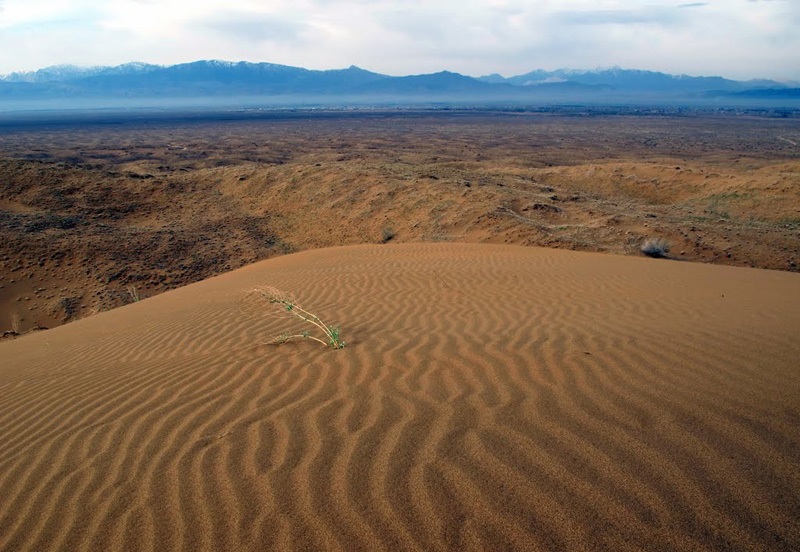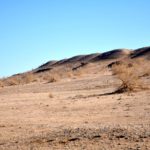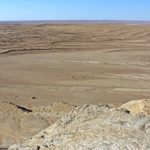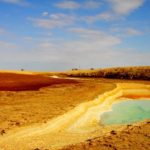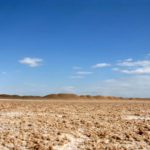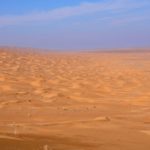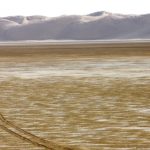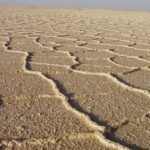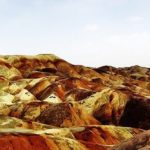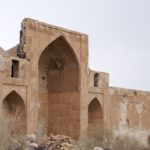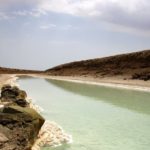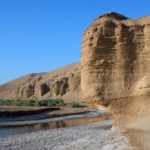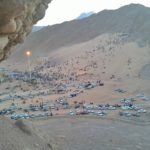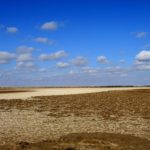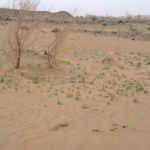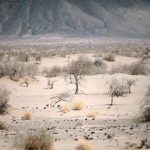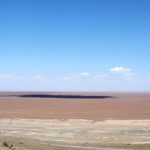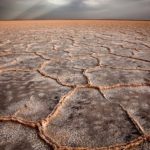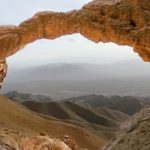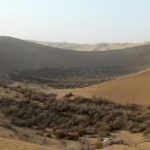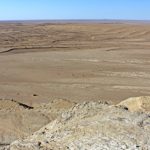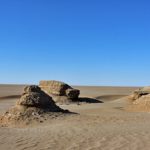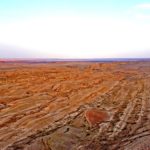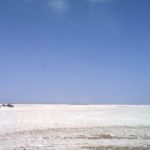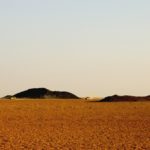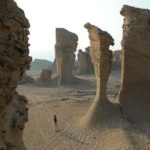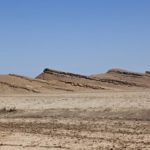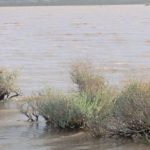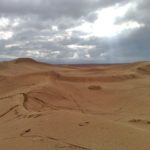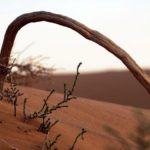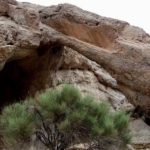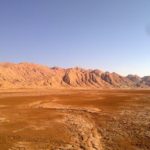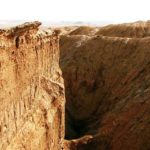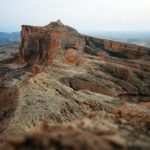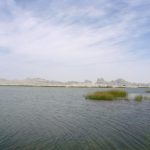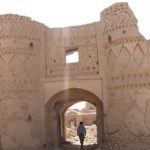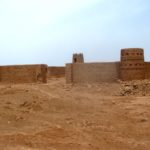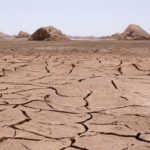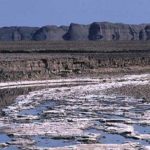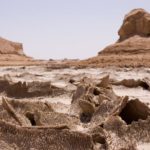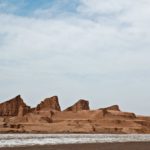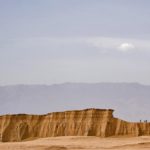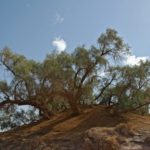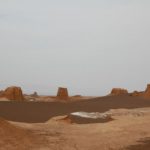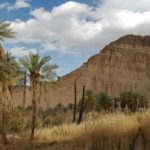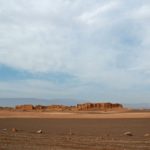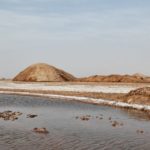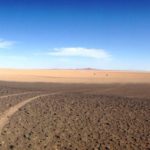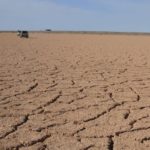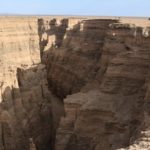Sinbek hole is located at N340600 E513422 geographical location in Isfahan province. Sanbek Hole is located 2 kilometers northeast of Aran and Bidgol city in the sand flows of Band Rig area and southwest of Maranjab Desert. To reach this hole, you will have to cross the Aryan and Bidgol East Sabahi Streets to the end. It then moved north on the dirt road at the last junction and, after a mere 1.5 km, entered another branch road just west of the first dirt road. The road leads to the sunk holes after 2 km. It is worth noting that after the pits continue on to the Chah-e-Kebja area and the main route to Maranjab Desert. The jacket on this route requires an assisted car.
Read More ...
One of the prominent features of this area is the planting of watermelons in the dug areas called pits. Farmers in these pits dig a meter or a metronome into fresh water and use it to plant watermelons. It should be noted that the watermelons of this region have been proven to treat kidney and prostate diseases, as watermelons in the area have a high water content. The watermelon harvest season is one hundred days after New Year’s Eve, about the end of June and the first decade of July. The slope of the terrain extends from the vultures to the desert, and the presence of hard layers of ground that create groundwater reservoirs near the surface makes the Sanbeck Pit area have underground reservoirs close to the surface. Watermelon is very suitable for the treatment of inflammatory or arthritic diseases, rheumatism and knee arthritis due to its high antioxidant properties, which means that it has high potassium and thirst and is high in potassium. Giving mineral salts to the body results in perspiration. High potassium is effective in preventing cancer and dementia, but it is not beneficial for diabetics to have glucose (fructose).
Since ancient times, farmers have used this feature to plant dry land. However, due to the presence of runoff in the area and negligence to stabilize them, with any hurricane or strong wind, a large amount of sand flows into the pits, and every year prior to cultivation, the sand should be manually topped up with a shovel. Bring the pits which are very hard to use. In the old days, to get to the Sambek pits, they had to walk on bare feet with bare feet. Due to the harsh nature of the desert in the summer, most nights are spent in the moonlight, staying in the pits several times a day, especially when preparing pits for cultivation. Crops such as watermelon, melon, cotton and sunflower are cultivated in the pits, but the best product that has worked well and has the highest level of production is watermelon.
In order to prepare the pits, the unused ribs must first be removed from the pits. Fluid streams easily pile up holes due to numerous desert storms. By transporting the sand to the top of the sand fence, the pits begin to be prepared for cultivation. After drilling the soil and providing favorable conditions, first a cylindrical cavity with a diameter of 5 cm to half a meter and a depth of one to one and a half meters is dug in such a way that water piercing portions or as well as millimeter springs flow into the pit. Subsequently, the successive pits are dug about one meter apart, so that the soil of the next pit fills the previous pit, thereby also falling to the ground, ie, the soil comes from the basement to the basement and from the basement to the basement, and so on. The damp and muddy soil beneath the surface is brought to the surface. In this case, planting watermelon seeds in the damp soil of the pits will not require water. Digging of the pits is said to occur in several rows, depending on the extent of the pit. Some farmers in the center of the squares created by filling pits, digging pits and dumping animal fertilizer into the soil and digging it into the soil to get more and better produce. As such, no fertilizer is used in the production of this product, and the obtained watermelon has many medicinal properties. It is also drilled at the bottom of each pit at half a meter in diameter and one to one-and-a-half meters deep to provide drinking water to the farmer, and is covered with cloth and cloth to prevent the penetration of shavings and animal penetration. Clear, fresh and drinkable water is ready to drink and cook tea and food after the sands have settled.
The hole is now ready for cultivation. A few days later watermelon seeds are planted in the damp soil. After the seeds are planted and sprouted, their roots easily penetrate deep into the soil through the soft soil, reaching the natural reservoir of groundwater in the summer heat of the desert with no need for irrigation. Farmers occasionally revert to pits, to weed the bushes and to guide them and to arrange them so that they do not get tangled, and if they are disrupted by the wind, they also arrange for shavings or pottery under the bushes, until The effect of the heat of hot sand during the hot and sunny desert days is that the plants are not refractory. Continuous care of pits against vicious animals and animals is done to obtain the product by early July. Large watermelon pits are characteristic of Aran and Bidgol desert watermelons compared to conventional and native aquatic watermelons, low sugar content, and thick skin.

